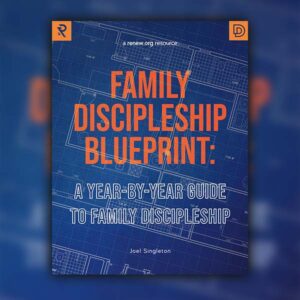Disciple Making Movements – a History and a Definition (Part 2)

This is Part 2. To read Part 1, click here.
Towards a Definition of “Disciple Making Movements”
We now want to discuss definitions of disciple making movements. Is there a basic definition of a Disciple Making Movement? Various definitions already exist:
- When a disciple-making process expands to four generations consisting of 100 groups over a short period
- When a disciple-making process spreads to 4 different streams with each moving to four generations resulting in at least 100 groups
- To sustain the width of large numbers,
- Disciples must be able to replicate disciples with a quality,
- That allows the 3rd generation of disciples to do what happened in the first generation,
- Out of sight of the first generation.
- Is there abundant fruit? Is the good news of Jesus giving birth to new disciples?
- Does the fruit bear more fruit? Are these disciples producing more disciples?
- Does the fruit last? Can the disciples producing disciples produce disciples?
No definitive, authoritative measure will allow an “inerrant” definition. But can we come to an agreement in our tribe (Discipleship.org) about the use of the term?
Let’s first unchain disciple making from discipleship. By Jesus’ practice making disciples starts with lost people and ends with Biblically functioning churches. Too often discipleship is a term used to focus upon Bible knowledge or the growth of Christians. So, disciple making is a broader framework, grounded in the teachings of Jesus, to include traditional discipleship, but to be much more.
A simple way of discovering if we are on the way to movement resides in Harry Brown’s, (leader of the New Generations team) description of movement thinking; three dimensions, wide, deep and long. Acts-like movements possess a width regarding numbers, depth regarding quality and length regarding sustainability.
These dimensions are vital to any definition of a DMM because inherent in these dimensions is multiplication in the three dimensions. For the good news of Jesus to go wide, deep and long there must be multiplication of disciple makers at its core. We might think of it this way,
Or can your disciples’ disciples make disciples without you present?
Planning for multiple generations of disciples challenges our methodologies. Methods must be simple enough to be repeatable, so they instill a multiplication DNA as a primal instinct in new disciples. Any definition of a Disciple Making Movement must include multiplication at every level.
Finally, the bottom line!
The definition of a Disciple Making Movement should be viewed from two vantage points, early on and fully developed. Using a modified understanding of the language in the Four Disciplines of Execution, we might think of lead measures, what causes movement and lag measures, how do I know if I have one.
Our lead measure might focus on Brown’s three dimensions turned into questions.
This set of questions allows us to test our methods and see if we have the makings of a movement and to adjust our practices accordingly.
As much as we resist bringing metrics into ministry, it is instructive to use a template of multiple generations as Paul encouraged Timothy (II Timothy 2:2). Practitioners will report that once you reach four generations, you know that you have multiplication DNA embedded in every generation because replication can take place without it being dependent on a personality.
It is also important to think in terms of multiple streams as well. The idea of multiple streams of disciple makers demonstrates the exponential character of disciple making. A simple, repeatable methodology that multiplies in different streams, magnifies the power of the Spirit through the Word of God and reduces the probability of results caused by human effort alone.
So, in summary, Bobby Harrington and I recommend the following definition.
Disciple Making Movements Defined
A disciple making movement exists when churches* plant churches
- through gospel activity
- that has abundant fruit among the lost,
- that multiplies these disciples (people growing in obedience to all of Jesus’ commands)
- who in turn replicate themselves in others, so that we can see at least four generations regularly produced
- in multiple streams of disciple-making activity
- and these streams multiply consistently into churches.
*Discipleship.org defines a church as – A spiritual family growing in surrendered obedience to all the teachings of Jesus Christ who gather together regularly under Biblically recognized leadership for the purpose of fulfilling the Great Commission (making disciples) with a Great Commandment heart (loving God, loving people).
Written by Roy Moran of New Generations
If you have enjoyed reading this, please consider joining our email list!











